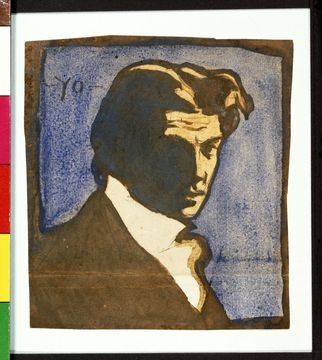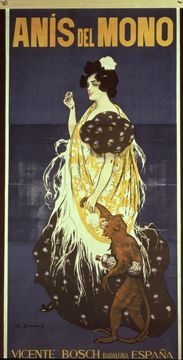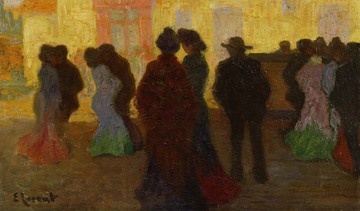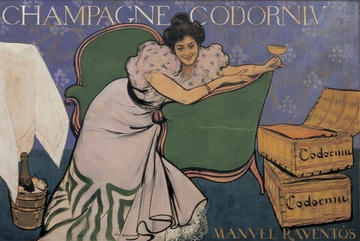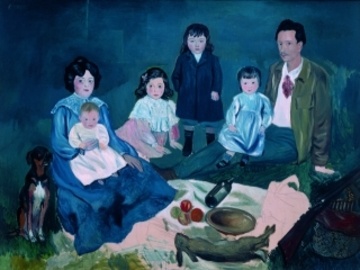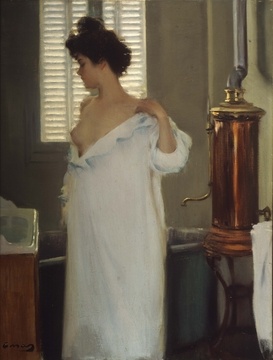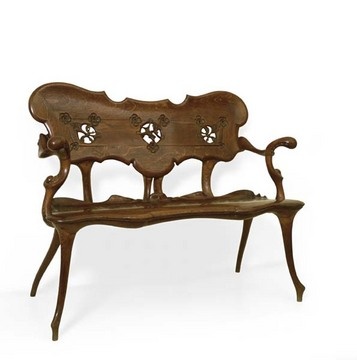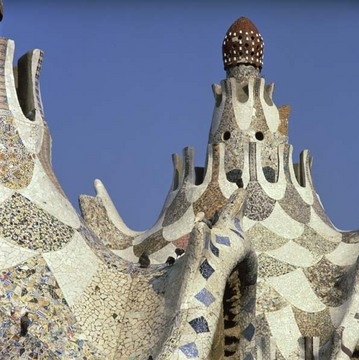Barcelona 1900 at the Van Gogh Museum
Modernisme Art Nouveau in Historical, Cultural and Artistic Context at Amsterdam Museum
By: Mark Favermann - Dec 27, 2007
At The Van Gogh MuseumPaulus Potterstraat 7
Amsterdam, The Netherlands
21 September 2007 - 20 January 2008
Blockbuster exhibitions have been a mainstay of major museums for the last century or so. Just called simply large exhibitions, commemorations, salons or reviews, museums have attempted to draw greater and greater audiences to experience art and artifacts at various strategic times. I have seen and enjoyed many of these throughout Europe. Some are just surveys of elements and items, while others are thoughtful structured learning experiences illustrated by wonderful art and sculpture.
Currently, a landmark exhibition is being presented at the Van Gogh Museum in Amsterdam that inculcates the best of what a museum blockbuster should be. Barcelona 1900 celebrates the city of Barcelona at a particular and special time in all its glory. This major exhibit portrays the somewhat astonishing transformation of this vibrant Spanish city between 1880 and 1909 through its art and culture.
During this 30 year period, Barcelona underwent an impressive architectural development phase and flourished culturally and artistically. This rather elegant exhibition provides an insight into a vibrant city both then and now. All the leading Spanish artists of that period starting with, of course, Pablo Picasso followed by Isidre Nonell, Santiago Rusiñol, Alexandre de Riquer and a very prolific Ramon Casas, as well as the period's most significant architects and designers including Antoni GaudÃ, LuÃs Domènech i Montaner and Josep Puig i Cadafalch. Each left a significant and powerful legacy and are represented here by often exquisite works that are rarely on view.
This seemingly renaissance period for Barcelona was caused in part by the rise of industry in and around the metropolis which generated an increasingly prosperous middle class. This bourgeoise commissioned artists and architects. Another ingredient was the success of the Exposicio Universal in 1888. This brought Barcelona out of its isolation into the more modern Europe. This exposition stimulated young artists and designers to visit Paris. This in turn led to the establishment of Barcelona's own version of Art Nouveau, Modernisme. This is the very organic styling that is shown in many of the imaginative figures and elegant pieces in Barcelona 1900.
Barcelona 1900 takes the visitor on a stimulating guided tour of the significant places in the city from its unique Ramblas via the Palau de la Música Catalana and the Hospital de Sant Pau on to GaudÃ's Park Güell and the church of the Sagrada Familia. Over 200 works of art including paintings, drawings, sculpture, furniture, jewellery, scale models, films, stage scenery and mosaics reveal a remarkable and at times sumptuous breadth of artistic creation and variety.
To make visual and cultural sense of this treasure trove, the curator, Teresa M. Sala of the University of Barcelona, has divided this expansive exhibition into various sections. Mindful of the need to place each item in historical context, the exhibit intermingles social-economic information throughout the display with the artistic.
The visual and applied arts section includes many wonderful pieces. The exhibition features paintings by many of the leading artists of this period, including a series of 12 portraits on paper by the young Picasso of himself and his artist friends. This series has been reunited especially for this exhibition. Also, the exhibition features some striking examples of applied arts including a complete interior by designer Joan Busquets, bewitchingly beautiful jewellery by LluÃs Masriera and rare yet amazingly graceful pieces of furniture designed by Antoni Gaudà .
The early works by Picasso were wonderful. His work demonstrated a master's touch at a youthful age. However, there is a very Spanish quality to these works in subject matter and even color. The new Modernisme style made subtle use of lines and sparkling colors.
Picasso's works include this sensibility. Also shown are striking cityscapes and works inspired by the bohemian atmosphere in the Els Quatre Gats artists' cafe by Picasso.
Architectural innovations are presented by the fantastic architecture of GaudÃ, Domènech i Montaner and Puig I Cadafalch contributed to the city's cultural fame and its almost magical feel. Engineer Ildefons Cerdà 's urban expansion of Barcelona is widely considered to be one of the most visionary architectural and urban design innovations of the 19th century. It is still referenced as an important model to present day architects and city planners.
The new elegance of Modernisme was particularly evident in applied arts and design motifs. Architect Antoni Gaudi's (1852-1923) unique aesthetic and powerful design work has always been an inspiration to me. So, I was particularly grateful to see and intrigued by the gracefully exquisite and extremely rare examples of Antonio Gaudi's furniture. To see greatness is always wonderful. Examples of the works of Montaner (1849-1923) were also a revelation for me. He was not only an architect but a visual artist and graphic designer. He was the rare example of the total artist.
During this period, new materials were integrated with traditional methods in architecture as well. These included wrought iron, mosaic tableaux and sophisticated use of ceramics. These are clearly reflected in many of Gaudi's more spectacular projects and those of his contemporaries.
Thoughtfully, the exhibit sheds a clear light upon the negative side of rapid industrialization. This is the flip side of Barcelona's prosperity. Poor living conditions of workers led to the creation of a breeding ground for social unrest and in turn the rise of socialist and anarchist movements. Violent uprisings resulted in a bombing and popular uprising against church and state. This situation is documented in the exhibit by politically motivated paintings, humorous cartoons and documentation drawings.
Accompanying the Barcelona 1900 exhibition is a free booklet (in English and Dutch) that takes the visitor on a guided tour through the exhibition. A well-illustrated more comprehensive catelogue is available for sale.
Barcelona 1900 is a wonderful, highly contextual exhibition of a time and place blossoming with artistic creativity. It provides an insight into a city which even today continues to intrigue and inspire visitors, artists and designers. The rare art and objects shown are a reminder of the powerful legacy of this special city. Hopefully, this exhibition will travel to North America to be shared by a larger audience.


